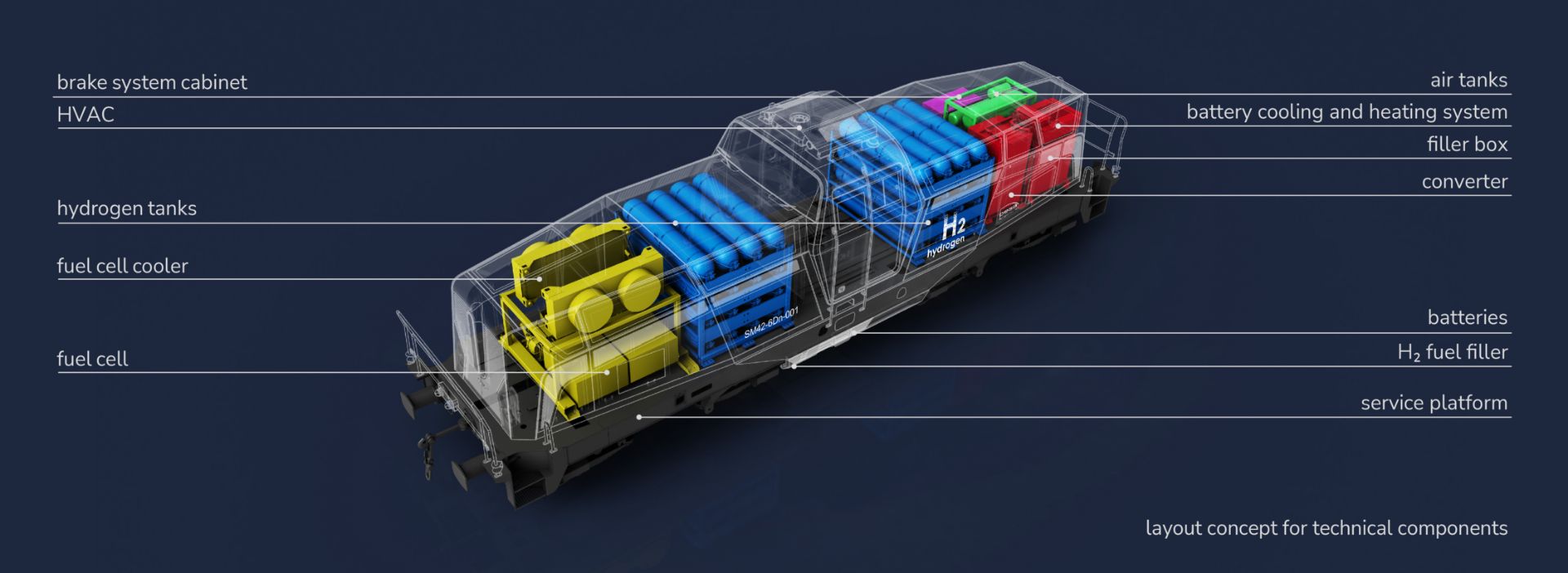Poland to test hydrogen-powered shunting locomotive with PESA

The Polish Office of Rail Transport (UTK) approved the deployment of a hydrogen-powered shunting locomotive “for the purpose of conducting operational tests”. This initiative was carried out in collaboration with PESA, a Polish company specialised in manufacturing rail vehicles.
PESA modernised an SM42 locomotive, which was powered by diesel, and converted it into a 6Dn, powered by hydrgoen. As the company mentioned, “two hydrogen cells /85 kW/ are responsible for generating energy”. As PESA mentioned, the locomotive can run at up to 90 km/h and its weight is 70 tonnes. The locomotive is equipped with an autonomous driving system as well as an anti-collision system. The aesthetic of the locomotive was modified as well. The driver’s cabin has been moved to the centre of the vehicle.

Poland choosing hydrogen over HVO
European countries are looking for greener ways to carry out rail freight operations including shunting. However, Poland seems to be one of the first to embrace hydrogen. Over the last couple few months, shunting operations at the Bremerhaven and at the Munich-North shunting yard, in Germany, have been powered by Hydrotreated Vegetable Oil (HVO). HVO seems to be the way to go when it comes to transitioning to greener fuels than traditional diesel in Europe.
At least this is what transpired in May from the European Association of European Rail Rolling Stock Lessors (EARRL). The EARRL claimed that HVO would be the best solution for a first phase and dual-mode battery-electric would take over in the longer term. On the other hand, the EARRL does not put much faith in hydrogen-powered locomotives, especially when it comes to rail freight.
Also read:




